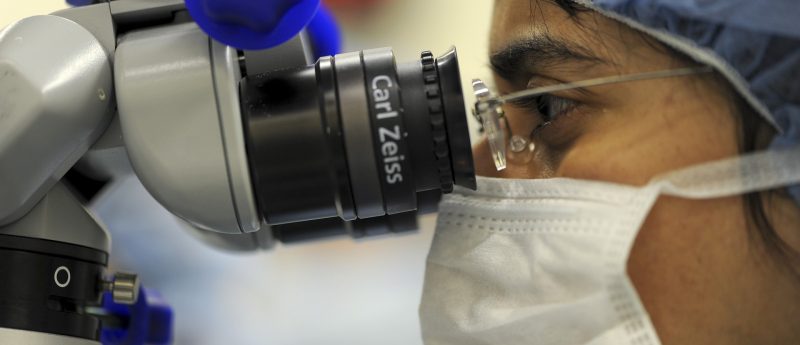New biomicroscope could predict Type 2 diabetes by scanning the eye

At this year’s annual meeting of the European Association for the Study of Diabetes in Barcelona, Spain (16–20 September), Dr Mitra Tavakoli (University of Exeter Medical School, UK) presented the results of an early pilot study. The study shows that analysis of the lens of the eye could predict Type 2 diabetes and impaired glucose tolerance.
Impaired glucose tolerance is known as prediabetes and is recognised as a condition that often precedes Type 2 diabetes. The study reports that measuring the level of autofluorescence in the eye could predict the development of Type 2 diabetes caused by impaired glucose tolerance.
In the study, researchers performed scans of the eye using a newly developed biomicroscope capable of detecting advanced glycation end products (AGEs). The biomicroscope uses a non-invasive, focused beam of blue light and measures the autofluorescence in the reflected green light to produce a measure of AGE concentration.
Increased levels of AGEs in the body are known to contribute to the development of many diseases including retinopathy and neuropathy, common complications of Type 2 diabetes.
The pilot study assessed 20 people with diagnosed Type 2 diabetes, 20 with diagnosed prediabetes and 20 age matched control subjects. The study found significant increases in AGE levels in the eyes of people with Type 2 diabetes and prediabetes compared with healthy controls.
Dr Tavakoli commented: “Lens autofluorescence could be a robust marker of long-term diabetes control predicting future complication risks.” Earlier studies have shown that there can be a lag of up to 10 years between the onset of Type 2 diabetes and diagnosis. It is hoped earlier detection and intervention could prevent complications.
Whilst acknowledging larger, long-term clinical studies are required to confirm the findings, Dr Tavakoli concluded, “Although this is a pilot study, [it] is an exciting emerging new tool for early detection and monitoring the treatment of patients. It could improve the lives of people with Type 2 diabetes by reducing complications.”
Source: European Association for the Study of Diabetes (16 – 20 September; Barcelona, Spain); www.eurekalert.org/pub_releases/2019-09/d-stl091219.php
